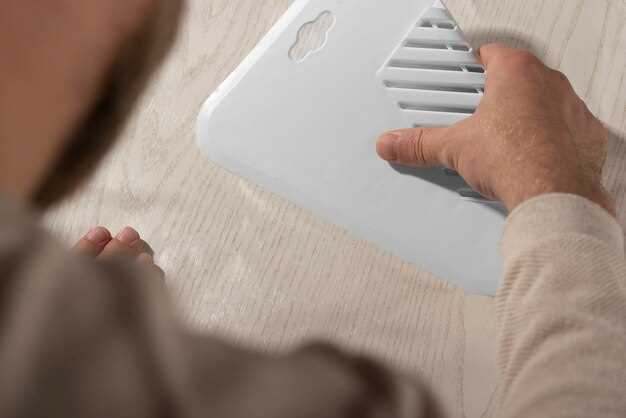
Maintaining an efficient cooling system is crucial for the longevity and performance of your vehicle. Over time, air can accumulate within the system, leading to decreased efficiency and potential overheating. This trapped air disrupts the flow of coolant and can create hot spots in the engine, causing serious damage if not addressed promptly.
Understanding how to properly bleed air from your cooling system is essential for any vehicle owner. This process ensures that the system operates at optimal levels, allowing the coolant to circulate effectively. In this article, we will guide you through the steps necessary to eliminate air pockets and restore the performance of your cooling system. By the end, you’ll be equipped with the knowledge to tackle this important maintenance task with confidence.
Whether you’re dealing with a minor issue or preparing for a more extensive repair, knowing how to manage the air within your cooling system can save you time and money in the long run. Let’s delve into the techniques and best practices for bleeding air from your system, ensuring your vehicle remains in peak condition.
Identifying Symptoms of Air Pockets in Your Coolant System
Recognizing the symptoms of air pockets in your coolant system is crucial for maintaining optimal engine performance. Air pockets can disrupt the flow of coolant, leading to overheating and other serious issues. Here are key signs to look for:
1. Overheating Engine: One of the most prominent indicators of air pockets is an overheating engine. If the temperature gauge in your vehicle frequently rises to the red zone, it may signal that coolant circulation is impaired due to trapped air.
2. Fluctuating Temperature Gauge: A temperature gauge that fluctuates unexpectedly can also point to air pockets. When air disrupts the coolant’s flow, the engine temperature may oscillate rather than remain stable.
3. Bubbling in the Radiator: If you notice bubbling or gurgling noises coming from the radiator when the engine is running, it often indicates that air is trapped within the coolant. This can prevent the system from achieving the necessary pressure for efficient cooling.
4. Coolant Overflow: Air pockets can cause the coolant to boil over, leading to an excessive overflow from the reservoir. Check for coolant leaks around the overflow area, which can be a sign that air is causing the coolant to expand incorrectly.
5. Reduced Heating Performance: In vehicles equipped with a heating system, poor heater performance can signify air pockets. If the cabin heater fails to provide adequate warmth, it may be because air is interfering with the flow of coolant to the heater core.
6. Random Temperature Fluctuations: If you experience random fluctuations in engine temperature during operation, it could indicate that air pockets are preventing consistent coolant flow. Monitoring these variations can help diagnose potential issues.
Addressing air pockets promptly is essential. If you observe any of these symptoms, consider bleeding the coolant system to restore proper flow and ensure efficient engine operation.
Step-by-Step Guide to Bleeding Air from Your Vehicle’s Cooling System

Bleeding air from your vehicle’s cooling system is crucial for maintaining optimal engine performance and preventing overheating. Air pockets within the system can disrupt coolant flow, causing hot spots and potential engine damage. Follow these steps to effectively remove air from your cooling system.
Step 1: Prepare Your Vehicle
Ensure your vehicle is on a flat surface and the engine is cold. Open the hood and locate the radiator cap and expansion tank. Always check your owner’s manual for specifics related to your vehicle model.
Step 2: Locate the Bleed Valve
Many vehicles are equipped with a bleed valve at the highest point of the cooling system. This valve allows trapped air to escape. If your vehicle doesn’t have a bleed valve, you can still bleed the system by removing the radiator cap.
Step 3: Fill the Cooling System
With the radiator cap off, pour coolant into the radiator until it reaches the top. If using an expansion tank, fill it to the recommended level. This will help push air pockets out of the system.
Step 4: Start the Engine
Start your vehicle and allow it to reach operating temperature. As the engine heats up, the thermostat will open, circulating coolant throughout the system and helping to displace any trapped air.
Step 5: Open the Bleed Valve
If your vehicle has a bleed valve, gradually open it while monitoring coolant levels. Be prepared for some coolant and air to escape. Once you see a steady stream of coolant without bubbles, close the valve securely.
Step 6: Check Coolant Levels
After bleeding the system, turn off the engine and wait for it to cool down. Check the coolant level in the radiator and the expansion tank. Top off if necessary, ensuring the system is filled correctly to prevent future air pockets.
Step 7: Test Drive
Finally, take your vehicle for a short test drive. Monitor the temperature gauge to ensure it remains within the normal range. Check for any leaks around the radiator and hoses. If issues persist, repeat the bleeding process or consult a professional mechanic.
Following these steps will help ensure that your vehicle’s cooling system operates efficiently, keeping your engine running smoothly without the threat of overheating due to trapped air pockets.
Common Mistakes to Avoid When Bleeding Cooling System Air

When bleeding air from your cooling system, there are key mistakes that can lead to ineffective results and potential damage. Recognizing these errors can ensure a more efficient process.
1. Skipping the Coolant Levels Check: Before starting the bleeding process, neglecting to check the coolant levels can create air pockets. Always ensure that the coolant is filled to the appropriate level to prevent introducing more air into the system.
2. Ignoring the Manufacturer’s Guidelines: Each vehicle may have specific methods for bleeding air from the cooling system. Failing to follow the manufacturer’s recommendations can result in incomplete air removal, leaving harmful pockets that can affect engine performance.
3. Not Using the Right Tools: Using improper tools can complicate the bleeding process. Tools such as a coolant funnel or dedicated bleeder kit help to effectively remove air and prevent spills, which can introduce more air and disrupt the process.
4. Neglecting Temperature Control: When bleeding, it is crucial to have the engine at operating temperature. Cold coolant can cause air pockets to form more easily. Allow the engine to reach its optimal temperature to ensure effective bleeding.
5. Failing to Monitor the Process: Many overlook the importance of monitoring the bleeding process. Continuously check for escaping air and ensure that coolant is circulating properly. If air pockets remain, the system will not function effectively.
6. Rushing the Procedure: Quick fixes can lead to mistakes. Take your time to ensure every step is completed methodically. Rushing can leave air trapped, leading to overheating or cooling system failures.
7. Overlooking the Radiator Cap: The radiator cap plays a significant role in maintaining system pressure. Ensure it is appropriately seated during and after the bleeding process to prevent air from re-entering the system.
By avoiding these common pitfalls, you can effectively bleed air from your cooling system, ensuring optimal performance and longevity of your vehicle.
